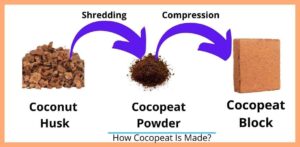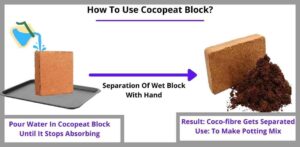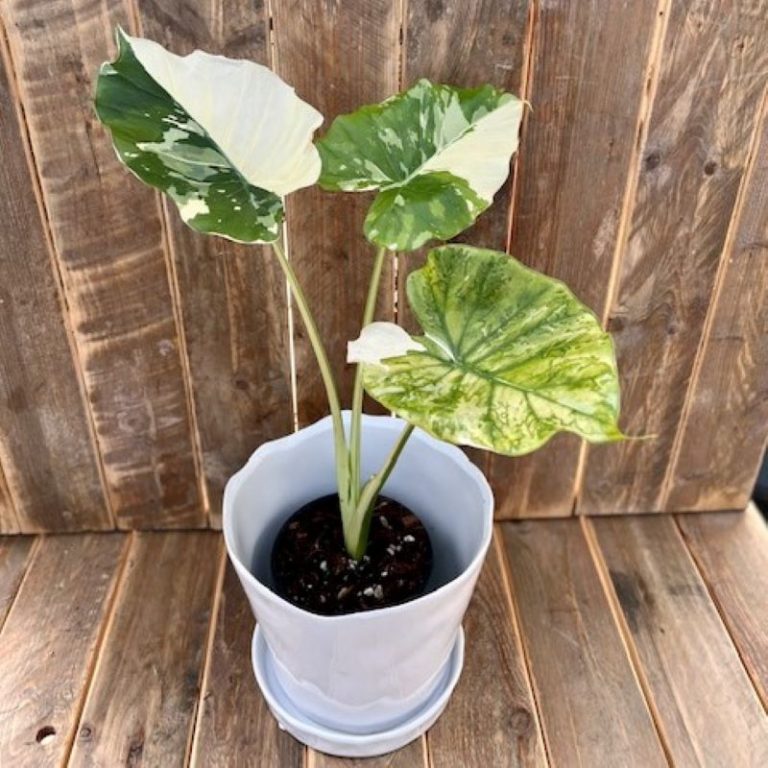We always want the best substrate for our plants. Commonly used substrates by most gardeners are: Soil, Vermicompost, Peat Moss or Combination of these. However, There is a new substrate that is making its place in the heart of gardeners like me. This substrate is none other than Cocopeat. In this article, we will mainly focus on the Cocopeat: Its Advantages, Disadvantages and Many Other Information. However, At first, We will learn some basic things about it.
What Is Cocopeat?
Cocopeat is a substrate for growing plants which is made by crushing coconut husk/fibre. It is a very good substrate for growing different seedlings in an effective and efficient way.
Cocopeat Making Process

Most of us have used coco-peat but don’t know how it is made. It is the final product made from coconut husk. First of all, Coconut husk is extracted by peeling the outer layer of coconut. The coconut husk thus obtained is soaked properly in water. The coconut husk should be soaked for about 6 months to make it ready to use. After 6 months, Coconut husk is taken out of water and de-fibering process is done. De-fibering is done in defibering machine.
There are two types of fibres in coconut husk:-
1.Soft fibre
2.Bristle fibre
In de-fibring machine, soft fibre is separated to make ropes and Bristle fibre is used to make cocopeat. Until 1993, bristle fibre was considered as waste materials and was not in use but in present time, It has become the essential component of the potting mix. The Cocopeat Powder thus formed after de-fibering/Shredding of Coconut husk is then compressed with machine to form Block to sell in market.
Advantages Of Cocopeat
- Being lightweight and easy to use, Cocopeat is best for indoor gardening and rooftop farming.
- It Increases the water holding capacity of soil mix.
- It reduces the compaction of soil and increases aeration.
- It is best for germination of seeds.
- Better root development of the plant without root bound problems.
- The pH of Cocopeat is 5.7-6.5, ideal for most of the Plants.
- Being a natural weedicide, It doesn’t let the weeds grow.
- It is used to give softness in Potting Mix.
- Less fungal infection.
- It has high cation exchange capacity which makes the nutrients readily available to plants.
- It works best in soil-less hydroponic farming.
Disadvantages Of Cocopeat
- Rotting of roots due to too much water holding.
- Cocopeat doesn’t provide good anchorage (Support) which may cause leaning and lodging of plants.
- Succulent and Plants like Cactus, Stone Lotus Flower cannot be grown.
- Salinity is high which restricts the plant growth.
- It doesn’t have any nutrients. It just acts as a medium to grow plants.
- The results are best while using fresh Cocopeat. The quality deteriorates with time.
- High market price due to more demand.
Cocopeat Block
Sometimes, the Cocopeat Powder is compressed to make a hard block called Cocopeat Block/Brick. This is done for easy storage, handling and long term use with minimum wastage. You can easily buy its blocks from the market or from online also.
How To Use?

Here is the simple procedure on using Coco-peat Block. As it is a compressed form, You can’t directly separate the coco-fibre from the block. The best way of using the block is to pour water on it as long as it stops absorbing the water. After that, Leave the block for about 2-3 hrs. Water loosen the compression and the brick becomes almost double inside. Now, Coco-fibre can easily be separated and used as potting media. The remaining part of the block can be stored and used in future when necessary.
Can we use Cocopeat Only to grow plants?
Yes! We can use Coco-Peat only for the growing of plants. However, There are certain difficulties you may face:-
Using it only increases the acidity level of soil which is harmful for many plants. So, You can add bio-fertilizers like Trichoderma, Azospirillum, Phosphobacter in Coco-peat and leave it for around 10 days. After this time, you can use it alone and these bio-fertilizers act as a buffer and also supply nutrients to the plant.
•Using coco only doesn’t provide good support to the plants which may result in lodging or leaning of plants to one side.
•As it has the characteristic of holding water, Using it only creates the condition of root rotting. You can add perlite in it to avoid this problem.
•It alone doesn’t have much nutrients to the plants as it is not a fertiliser.
Due to the above mentioned problems, We don’t recommend using it alone for growing plants. Instead, We recommend you to mix it with Compost and Soil for the best results.
Peat Moss vs Cocopeat
pH Acidic Neutral
Weed Seed Mixture Yes No
Water Retention Less More
Aeration Less More
Decomposition Fast Slow
Plants Best Suited
1. Garlic
2. Spinach
3. Coriander
4. Ajwain
5. Fenugreek
Plants Not Suitable
1. Rose
2. Jasmine
3. Hibiscus
Price
The price of Coco-peat in India is INR 60/Kg. The Cocopeat 25 kg bags price is INR. 1500
Final Verdict
Cocopeat is a good medium to grow any Plants easily. It has made indoor gardening way more easier. People with less knowledge are also getting maximum benefits. But, With increasing demand, the Impure Coco-peat market is growing. Therefore, One should be cautious while buying it. Try to buy it from an authorised seller or from one who is familiar to you.



